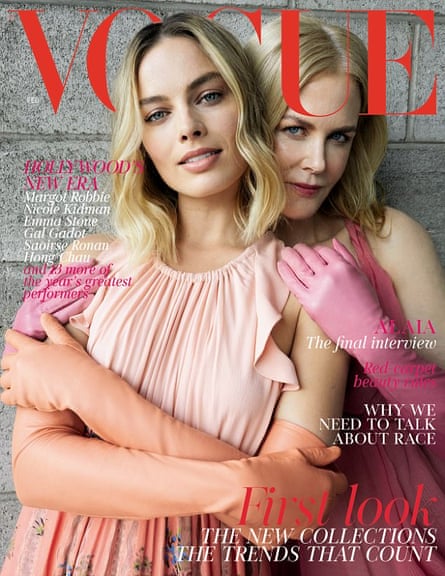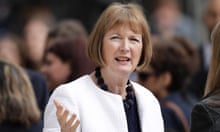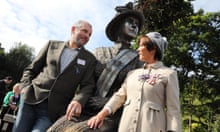British Vogue’s decision to mark 100 years since women were granted the vote has received much coverage in the past week. Its Meet the New Suffragettes spread features seven influential females “fighting to empower women in the battle for equality that rages on”: politicians Stella Creasy and Sophie Walker, artist Gillian Wearing, gal-dem founder Liv Little, journalist Paris Lees, blogger Dina Torkia and writer Reni Eddo-Lodge.
The list was widely perceived as displaying the diversity within the modern women’s movement. But on seeing the glamorous photo-spread, I had a sinking feeling. The reason? While women of colour and trans women are included, strikingly not one of those featured is disabled. (Disabilities can also be invisible, but after I asked the author of the piece, to my knowledge none of the women involved identify as disabled.)
It’s heartening to see talented women such as Lees and Eddo-Lodge front and centre in one of the world’s most famous publications – publications that are often heavily white and middle class – but in some ways, that makes it even worse that no disabled woman was included alongside them. It’s telling that no one at the magazine appeared to notice – or care – that a large chunk of the population was essentially missing (there are around half a billion disabled women globally), especially for a story promoting the ongoing “battle for equality”. After all, disabled women still experience some of the highest rates of domestic violence, poverty and exclusion from jobs and public positions.
And new editor Edward Enninful is supposed to be on a mission to address a lack of diversity in the magazine.
But the exclusion of disabled women goes beyond Vogue. Disabled women are rarely featured in the media: even campaigns or content that are purposely striving to include marginalised women routinely miss out those with disabilities. Only last week, Time’s Up – the Hollywood project to fight sexual harassment in the film industry and other workplaces – rallied support for greater representation of women of colour, migrant women, lesbian and bisexual, and trans women. But an initial statement widely shared on social media failed to mention women with disabilities (though “disabled women” are included in the letter of solidarity on the campaign’s home page).

Rihanna’s campaign ad for her Fenty Beauty cosmetic last year was rightly praised for its diversity, but no one featured had a disability. It says something about disabled women’s exclusion that we are somehow too marginal even for a conversation about the need to be included.
As a disabled woman watching these otherwise progressive campaigns, it sometimes feels as though we are almost invisible – members of the only group not invited to the party. Rightly or wrongly, this feels all the more painful when it’s a publication such as Vogue, in a culture in which idealised beauty standards traditionally cut out disabled girls as not “pretty” or “normal”. It feels as if, when it comes to the casting call of women, we are being airbrushed out; scrubbed off the picture as not quite right.
All of this matters in a very practical way: if disabled women aren’t included in these high-profile campaigns, our interests are much less likely to be addressed. This media exclusion also has a personal impact on disabled women and girls – who look in from the outside and see no disabled celebrity, campaigner or politician smiling back. When this exclusion happens often, it eventually finds a place inside of you: a shameful message that you’re not quite like other women.
I know as a teenage girl growing up with a disability in the 1990s how rare it was to see a disabled woman – or man – in the media. This has improved in recent years. CBeebies’ Cerrie Burnell, who was born with a right arm that ends below the elbow, has been beamed into children’s living rooms since 2009 (some parents complained that children might be scared of her), while the Paralympian Jonnie Peacock’s recent farewell speech on Strictly Come Dancing – in which he spoke of how pleased he was to be treated just like any other contestant – showed how powerful it can be having disabled people in the public eye.
But there is much further to go. It feels in many ways as if disability is the last frontier of inequality: far from the only inequality to still exist, but the one that frequently isn’t even mentioned. In Vogue’s words, “the battle for equality rages on”, but it should not take another hundred years for disabled people to be invited to stand alongside working-class, trans and women of colour. We need to start talking about this. If only for the young disabled girls who in 2018 pick up glossy magazines and still never see a woman quite like them.
Frances Ryan is a Guardian columnist
- This article was amended on 8 January to recognise the mention of disabled women on the Time’s Up website.










